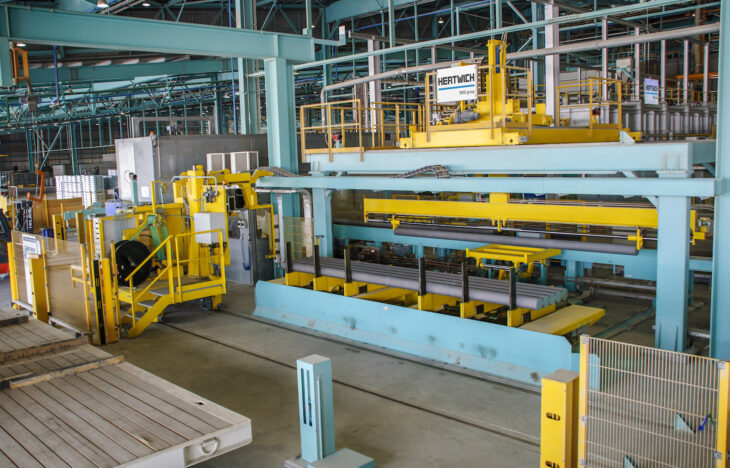Century Aluminum Company ordered a fully automated sawing line and stacking and a packing system for aluminum billets. The new line will be installed in the casthouse at its smelter in Sebree, Kentucky. The investment is aimed at further enhance the facility’s operational efficiency.
Century Aluminum is the largest manufacturer of primary aluminum products in the U.S. The company’s aluminum smelter in Sebree has a production capacity of around 220,000 tonnes per year, which is over a quarter of the company’s total output.
The new automated sawing line will be supplied by Hertwich Engineering GmbH, a subsidiary of SMS group. Century has worked with the supplier before, having previously installed a sawing line from Hertwich in 2000.
“[The automatic saw] has been proving its worth at the U.S. facility for over 20 years,” said Gerold Keune, CEO of Hertwich Engineering. “Now another latest-generation line from Hertwich is being added. Trust must be earned, and that’s something we achieved exceptionally well here.”
Replacing an older line at the Sebree plant, the new automatic sawing line will both increase productivity and require less manpower. Its energy yield is also outstanding, with the efficiency of its state-of-the-art electric motors meeting the strict requirements of current U.S. regulations.
The sawing line can process aluminum billets with a diameter of between seven and twelve inches. It has an hourly capacity of up to 225 short billets with a maximum length of 1.60 m, or 60 long billets with a maximum length of 6.10 m.
After sawing, the aluminum billets can be weighed — ready for calibration — and stacked side-by-side and on top of each other using so-called transfer cars. The billets are then tied with PET straps and placed on supporting timber blocks, so that they can be picked up and loaded by forklift truck. The billets, which are sawn to length, are delivered to extrusion press shops, where they are further processed into profiles for the automotive or aerospace industries.
The new automated saw line and other equipment are scheduled to go into operation in 2024.

